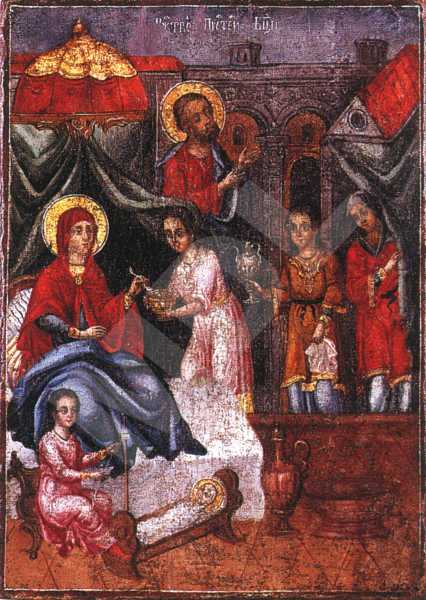The Nativity of the Virgin
Type:
Icon
Period:
From
the beginning of the
18 century
to
the end of the
19 century
Toma Vishanov-Molera, born around 1750, painter of icons and murals, founder of the Bansko school of art. He grew up in the family of the clergyman Vishan. Around 1765 he went to Vienna, where he studied painting. It is not known who were his teachers there or when he returned to Bansko. His fellow villagers called him the Moler, Molera(from German Maler ‘painter’), whence the entire family's surname. Under the influence of the European 18th century art Toma Vishanov painted his works in a new manner, unknown until then in Orthodox art. The figures are realistic, vivid, expressive. Toma Vishanov is an innovator in the early period of Bulgarian Renaissance. His ideas on art were not understood and at first were rejected by his contemporaries. His work has not been studied extensively. He died after 1811 in Bansko.
Dimmensions (cm):
31.5
/ 22.5
/ 2
Location
Country: Bulgaria
Province: Kustendil
Town: Boboshevo
Church: The Assumption of the Virgin
Source
Country: Bulgaria
Province: Kustendil
Town: Boboshevo
Church: The Assumption of the Virgin
Description
The composition is of many figures, in three distances, developed against the background of an architectural scape. The scene is laid in the house of Saint Joachim. The interior is represented conventionally with a canopy, under which, lying on a plank-bed, is the figure of Saint Anne. Included in the composition, in the right-hand side of the pictorial field, is the figure of a woman, standing behind a fence. Three other female figures are gathered around Saint Anne. The first of them is handing the young mother a vessel, the second one is carrying a pitcher and a towel, and the third one, in the foreground, is spinning with a distaff, seated on a chair with a high back, at the cradle, lying wherein is the swaddled Holy Mother of God. Painted in the background of the composition, covered up to his waist, is Saint Joachim, facing rightward, his arms stretched out in prayer.
Iconographical technique: Oil
The layer of the painting is a thin one, at some places a velatura, of a smooth texture. The modelling is a fine one. The figures are treated realistically. The details are painted very precisely. The varnish cover is laid thinly and evenly.The gilding is on bole, with gold-leaf, subsequently polished.
Base material: Wood
The icon's base is a one-piece oak panel, without any beams. The ground cover is a of plaster, thinly laid.
State, restoration traces and comments
There are no traces of any previous restorative intervention.


